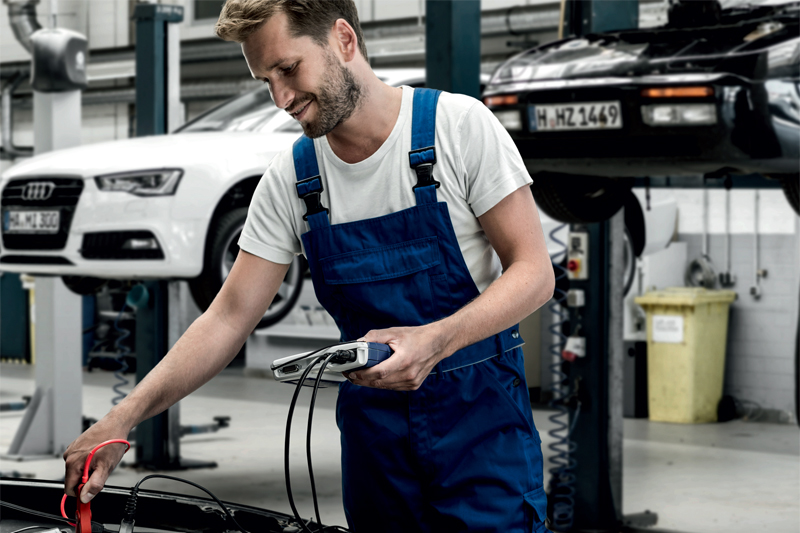
It comes as no surprise that the extended period of downtime caused by government-sanctioned lockdown has led to an increase in battery failures.
With the increased practice of home-working, the new ‘stay-at-home’ routine, and few to no visits to family or friends, road traffic has fallen massively throughout the UK. In fact, for many people mobility has come to a complete standstill due to social distancing restrictions. According to the automotive market research expert, GiPA, traffic has fallen by 75% in some areas of the UK.
Many vehicle drivers think that if the car is started and left running on idle for 15 minutes, this will keep the battery ‘topped up’ with charge. Many don’t realise that this is actually detrimental to the vehicle, as the charge required to start the car cannot be replenished simply by the car idling.

Varta recommends
Batteries should be able to cope for several weeks without use. However, for longer periods, VARTA recommends that workshops offer the following advice to customers:
● If possible, drive the car for 20-30 minutes instead of embarking on very short journeys. This will allow the alternator to fully recharge the battery
● Turn off the radio and use the electric windows and electric sunroof as little as possible, and only use the air conditioning system at a low level. This is because all these consumers draw power that can be better used to charge the battery
● If the car is parked for extended periods, keep the doors and boot closed and locked – only open if really necessary. This will keep the car in automatic sleep mode, which means the power consumption of all electrical devices will be reduced to an absolute minimum – as soon as they open it wakes the electrical consumers, which then start to draw power from the battery
● Ensure the battery is dry and clean, as dirt and moisture between the terminals can cause creeping currents and accelerate the discharge of the battery
● Even if a battery is easily accessible, it is better to charge it than to disconnect and remove it. Electronic systems in newer vehicles can trigger error messages or lose data when the power supply is interrupted, which then may require a visit to the workshop to be reset. It’s enough to check the voltage from time to time and recharge the battery as soon as it drops below 12.4V
By offering a battery check to all customers, and replacing or giving advice on those batteries close to failure, workshops will have provided peace of mind and a reliable service to their customer base.
For more information on battery testing and best practice advice for workshops, or to become a member of the VARTA Battery Test-Check Programme, please contact the VARTA team by emailing vb-uk-enquiries@clarios.com, or by following VARTA on Facebook at www.facebook.com/VARTAAutomotiveUK.
Battery care tips video
To watch a short clip highlighting best practice care for batteries during long periods of downtime, scan the following QR code.









